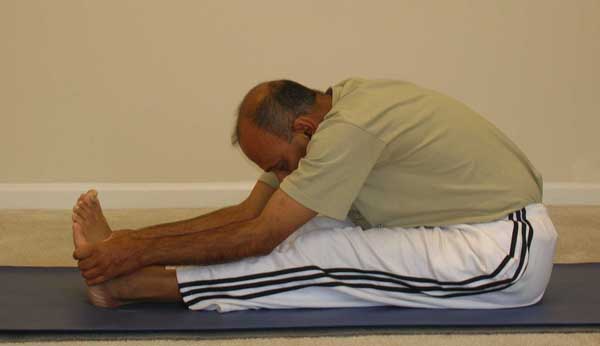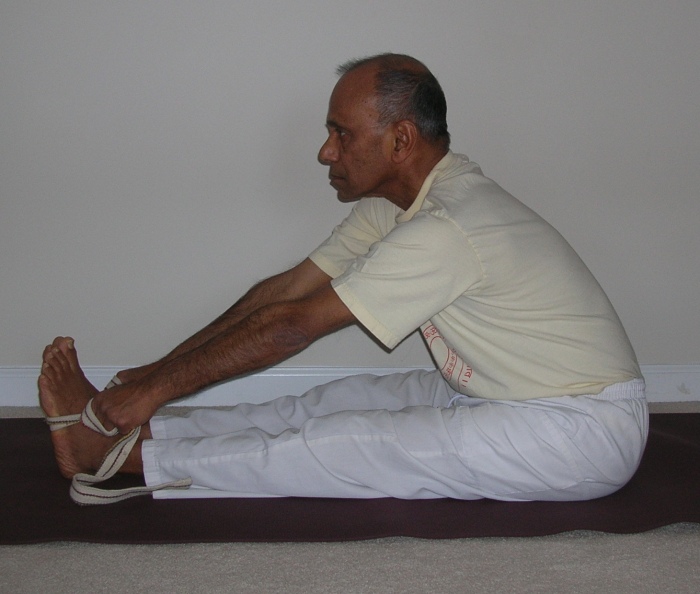In the previous post, we learned about one of the seated forward bending poses, Head-to-Knee pose. In today’s post, we will talk about another seated pose – The Seated Forward Bend. Pashchimottanasana –पश्चिमोत्तानासन– is a compound word in Sanskrit consisting of pashchim + uttaana + asana. “Pashchim” means the direction “West” as well as the back or the posterior. “uttaana” means to stretch or expand. So, literally the word implies that by practicing this asana, one can stretch and strengthen the spine.
Step-by-step
- Sit on the floor on your mat or a blanket and stretch the legs out in front. Try to maintain the spine upright. The feet should be together and the knees straight but not hyper-extended.
- Stretch both the arms out in front and while inhaling raise the arms up all the way above the shoulders. Keeping the spine elongated, while exhaling begin to bend forward, bending from the hips. Finally, hold on to the toes, the ankles, calves or wherever your hands will reach. The effort in this pose is to keep the spine unrounded.
- If your hands do not reach the toes, you may use a strap looped around the soles of the feet to keep the awareness on the spine. While using a strap, keep the elbows straight. Try to keep the knees straight. If it becomes uncomfortable to keep the knees straight, bend them slightly. With practice, you will be able to straighten the knees.
- To enhance the experience of the stretch, use the breath as a guide – while inhaling, lengthen the spine and while exhaling try to drop the chest down. At no time you should feel any strain or pain. Hold the position for about 6 to 8 breaths.
- While you are holding the pose, maintain total awareness on the stretch and the breath. By becoming aware of the part(s) of the body where the stretch is felt most, you will avoid any injury.
- To come out of the pose, stretch the arms out and with an inhalation, begin to straighten the spine up, raising the arms overhead. Finally, release the arms while exhaling and rest for a couple of breaths.
- Repeat the above steps one more time.
Contraindications
This pose stretches the spine from the top to its base. Use caution if you have an existing spinal injury and avoid attempting a deeper forward stretch. Pregnant women should spread their feet apart while practicing the forward bend. Avoid the pose in case of slipped disc, sciatica, diarrhea and asthma.
Benefits
Pashchimottanasana helps open the hips and groins while deeply stretching the legs and back. Because this pose requires the pelvis to turn into the extended legs while tipping forward, it stretches the hip joints and groins in several directions at once. And because the back of the extended legs and the front of the spine must lengthen to go deeply into this forward bend, it’s very effective at stretching those areas. This asana also tones the liver, spleen, pancreas, adrenal glands and kidneys and stimulates the pelvic organs and sex glands while cooling the body and quieting the mind. It stimulates circulation to the nerves and muscles of the spine.
At a subtler level, this asana is traditionally known for its value in harmonizing the nerves and the pranic nadis (the psychic nervous system) in the body and as such is helpful in preparing for meditation.


[…] Read the rest here: Pashchimottanasana (Seated Forward Bend) […]